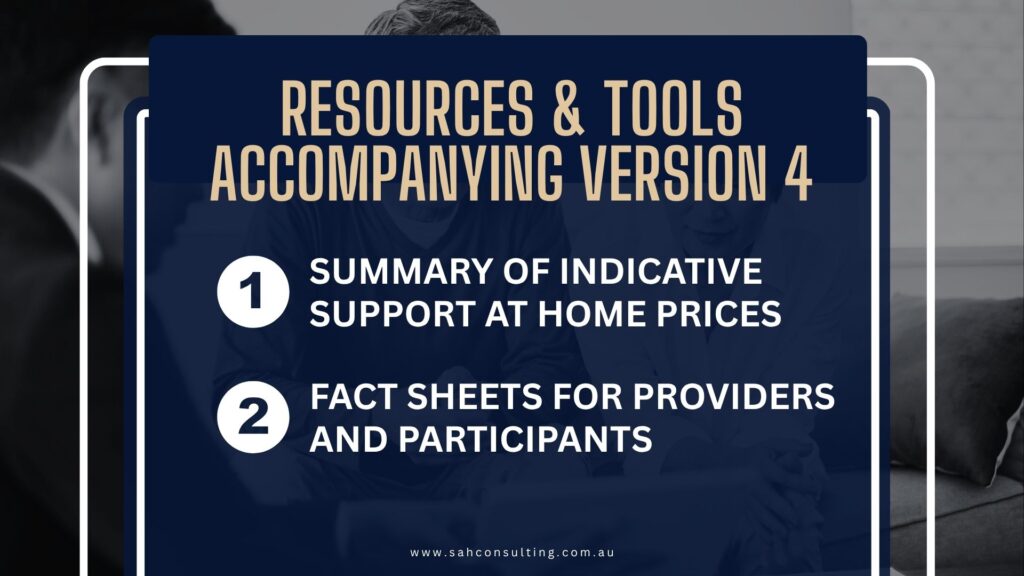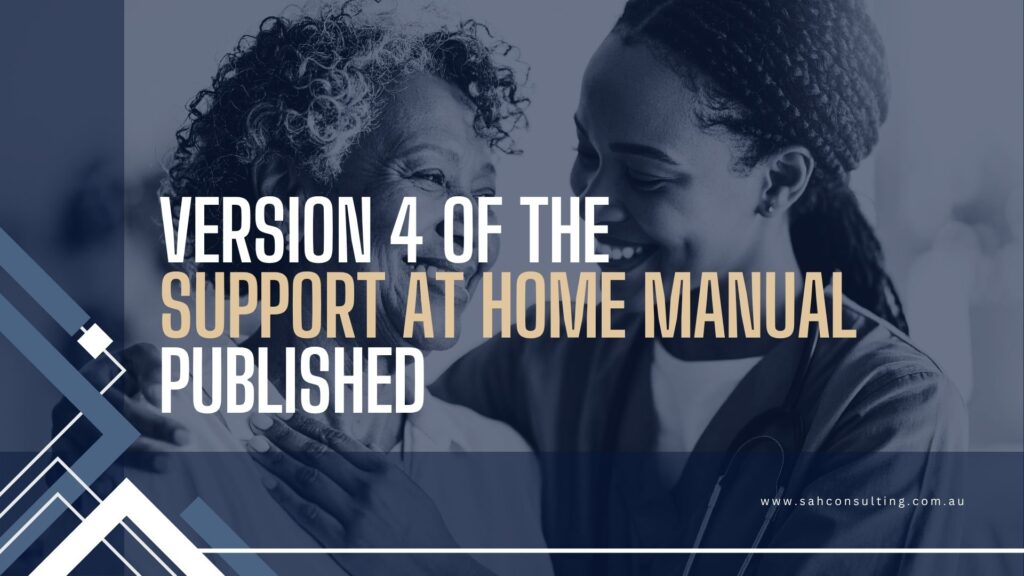Aged care reform is fast approaching, with the new Support at Home (SaH) program set to begin on 1 November 2025. To help providers prepare, the Department of Health, Disability and Ageing has released the latest Support at Home Manual 2025.
This fourth version builds on earlier updates — the Support at Home Manual v2 released in May 2025 and version 3 in June — and delivers more complete guidance on funding, compliance, and service delivery under the new system.
Version 4 was published less than eight weeks before implementation, leaving providers with a short timeframe to understand and act on the changes. In this article, we’ll look at what’s new in the manual, why it matters, and what providers need to do next.
What’s New in Version 4
The latest Support at Home Manual provides the most complete guidance so far, filling in gaps left by earlier releases. Key updates include:
- Completed sections and legislative references – all placeholders have been finalised, with clear links to the new Aged Care Act.
- Updated classification amounts – revised figures to support more accurate budgeting and planning.
- Reimbursements and evidence requirements – detailed rules for claiming, including services delivered by third parties and for assistive technology.
- Integration with CHSP – explanation of how Support at Home will work alongside the Commonwealth Home Support Program during transition.
Other important updates:
- Provider Requirements Search Tool to help identify service obligations.
- Interim funding, subsidy indexation for ongoing classifications, and details on the single provider model.
- Service agreements – what providers must include and key responsibilities.
- Care management funding – how calculations will work.
- Management of unspent Home Care Package funds, plus contribution rates for transitioned and grandfathered participants.
These changes give providers clearer guidance but also mean internal systems, agreements, and funding processes may need prompt adjustments before the November rollout.
Resources & Tools Accompanying Version 4

Alongside the manual, the department has released supporting resources to help providers prepare for the transition. These tools are designed to give clarity on pricing, compliance, and communication with consumers.
-
Summary of Indicative Support at Home Prices
This updated guide sets out indicative price ranges for services under the new program. It helps providers benchmark their own pricing structures and gives consumers a clearer picture of what to expect.
-
Fact Sheets for Providers and Participants
Two sets of fact sheets are now available:
- For providers: practical guidance on setting Support at Home prices and understanding consumer protections. This is called the provider fact sheet.
- For participants: plain-English explanations of prices and protections to support transparency. This is known as the participant fact sheet.
For more information, visit the Department of Health, Aged Care and Disability website.
Timing, Deadlines & Key Dates
The Support at Home Manual 2025 was released in September, less than eight weeks before the program’s 1 November 2025 start date. This is a tighter timeframe than many stakeholders had requested, as providers had hoped for the final manual to be available at least 12 weeks in advance. With implementation fast approaching, providers should prioritise reviewing the manual, updating service agreements, adjusting billing systems, and completing any required registrations to ensure compliance from day one.
Implications for Providers
With less than two months until the rollout, providers need to act quickly on the guidance set out in Version 4 of the SaH Manual.
What to do now:
- Review the manual in detail and identify changes that affect your organisation.
- Update internal processes such as billing, reimbursements, care management, and service agreements.
- Ensure compliance frameworks are in place for evidence requirements, particularly where third-party services or assistive technology are involved.
Key challenges:
- The short timeframe means providers may need to move faster than planned.
- Some areas may require legal or professional advice to interpret legislative obligations.
- Managing third-party delivery in line with new claiming rules could add complexity.
Opportunities:
- The manual offers clearer guidance, giving providers more certainty as they plan for the transition.
- Updated classification amounts can support more accurate budgeting and pricing.
- Stronger alignment with CHSP and new tools, such as the Provider Requirements Search Tool, can help streamline service delivery.
By acting early, providers can reduce risks and position themselves for a smoother transition to the new Support at Home program.
Conclusion
The release of Version 4 of the Support at Home Manual 2025 marks an important milestone in the lead-up to aged care reform. For providers, it delivers more complete guidance on funding, compliance, and service delivery under the new model. While many questions have now been answered, the short timeframe means readiness will depend on how quickly providers act.
Now is the time to download and review the manual, make use of the fact sheets, register for training, explore the Provider Requirements Search Tool, and update systems and agreements. Engaging teams and stakeholders early will help ensure a smoother transition when the program begins on 1 November 2025.
Need expert help preparing for Support at Home? SAH Consulting provides tailored guidance to simplify registration and compliance so you can stay focused on delivering quality aged care services. Partner with us today and move into the new framework with confidence.
